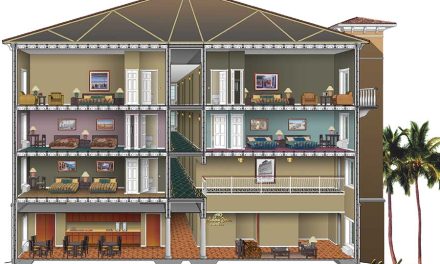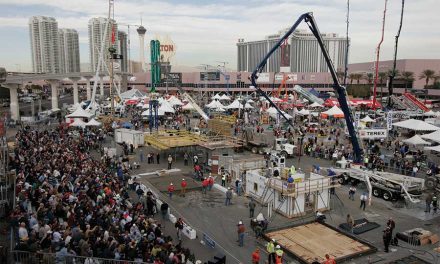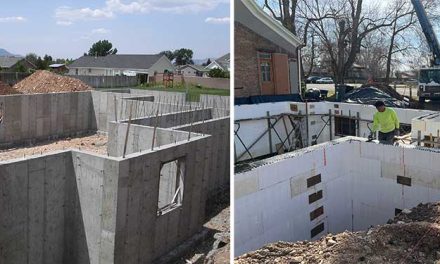California has one of the most stringent green building, energy, and structural codes in the country. All new homes are required to have solar, and the goal is to be net-zero in the coming years. California has also been plagued by one natural disaster after another. Fires, floods, earthquakes, and even the occasional tornado. ICFs are the perfect viable and proven solution to each case. So why doesn’t the state of California encourage and embrace the use of ICFs? Why are they determined to minimize their use in residential construction and penalize those that want to build better?
Many who build in California will wonder what I am talking about. The issue is located in the ICF section of the California Residential Building Code (CRC 608.1): “the provisions of this section are used to design concrete walls, project drawings, typical details and specifications shall not exempt construction documents from the requirement to be stamped by a California licensed architect or engineer.” Whereas CRC602.3 and CRC606.1 allow any non-registrant to design a wood frame and/or a masonry residence. This means that all ICF homes must be designed by either a California licensed architect or structural engineer, but just about any other type of home can be designed by a homeowner, builder, drafting service, designer, OR an architect and engineer. And, if any non-registrant designs (conceptually, or actually) an ICF residence, that person is in violation of California Business and Professions Code, Section 5536(a) and subject to civil penalties that can exceed thousands of dollars for each occurrence. Technically, in the eyes of the state, if a homeowner draws plans for an ICF home on their kitchen table and labels any wall as ICF, they are practicing architecture without a license and breaking the law.
Some might say, what’s the big deal, every home should be designed by an architect. The reality is that very few are. The American Institute of Architects (AIA) and other national trade publications state that roughly only 2 to 5% of all new homes in the U.S. are actually designed by a licensed architect. Most states exempt the requirement to allow people the freedom to design their home with whom they choose (including California for wood and CMU homes), licensed or not. Combined with the fact that most architects choose to focus on commercial projects instead of residential ones, many homeowners and builders have found that hiring a qualified drafter or designer or DIY-ing it to be a significant savings in the design process of obtaining one of the primary American dreams — a new home.
While I may be biased and believe most homes (ICF or otherwise) should be designed by an experienced drafter, designer, or architect, I realize that is a luxury not everyone can afford. This leads to the question I don’t have an answer to: Why has California singled out concrete homes? There are few design professionals who are experienced with ICF, so hiring someone who is qualified can be difficult. Anybody can design a wood-frame or masonry home in California, but requesting an ICF home comes with too many obstacles. If only 5% of all homes are designed by an architect in California, there’s an even smaller percentage of those architects who are willing or qualified to design an ICF home. Furthermore, there is at least some significant percentage of architects who will try to do everything they can to switch a client away from ICFs to more “standard” building methods.
Under California law, if a builder or consumer contracts an unlicensed drafting or design service to do their plans, those businesses are required by law to push those ICF customers to frame or masonry. That doesn’t leave much opportunity for single family residential ICF projects in not only one of the most populous states in the country, but a state that could really benefit from more ICF construction.
Making things worse is that most jurisdictions don’t even realize this law exists. Every jurisdiction I reached out to in California (18 different city and county building departments via emails to head building officials) said essentially, “as long as there is an engineer, anyone can design an ICF home.” But even though jurisdictions don’t always know the law and will allow projects to proceed, that doesn’t mean you’re safe. The California Architects Board has investigators that are now looking for violators and researching records and social media in order to penalize those for breaking a law that few even know is there. Those who are unlicensed and have designed ICF homes in California as new builds or to rebuild from the devastating fires or earthquakes in recent years should be very concerned about this retroactive government overreach targeted at the concrete home industry and should remove any reference to ICFs from all websites and social media immediately.
Some states already have laws in place that require an architect to design all new homes (ex. NJ, NY, NV, and HI), and some have limitations on how much a non-registrant can do. States like Florida and several others along the East Coast and Gulf Coast will allow anyone to design a home but require a structural engineer to review and prepare the structural design. But those laws are equal across the board for all types of construction methods. California specifically singles out concrete homes!
When and why this law was enacted, I don’t have that answer. However, anyone in the ICF industry that serves California in any way needs to be looking at ways to push back and get this unnecessary law repealed. This not only hurts the sales and jobs in our ICF workforce, but also creates risks for the citizens of the state by not allowing them the benefit to live in a safe home for their families. And for those who say “It’s just California,” you should realize that many state agencies watch what other states do and tend to follow. California cities started Impact Fees for new homes many years ago — now most major cities have implemented them across the country and charge thousands of dollars for every home built on top of the permit fees. That was “just California” too.
For those drafters, designers, and builders, this is a clear restriction of trade. For the ICF manufacturers, installers, and suppliers, this will cut into your revenues unless changed. I believe that this is an issue that should get national attention and I urge our large trade organizations to get involved: NRMCA, ACI, PCA, NAHB, ICFMA, and others need to join forces and push for change.
The citizens of California need ICF homes. They don’t need more bureaucracy preventing them from living in the best and safest home possible.

Robert J. Klob, CPBD is President of Robert Klob Designs Inc., an award-winning, full-service residential design firm specializing in ICF design and consulting throughout North America. He is a board member for several national trade organizations and regularly speaks and trains design professionals about fundamentals and proper ICF design techniques. He co-hosts a bi-weekly “Ask the ICF Expert” Q&A on Facebook. Robert can be reached at www.rkdzns.com,
866-584-2474, or robk@rkdzns.com.













